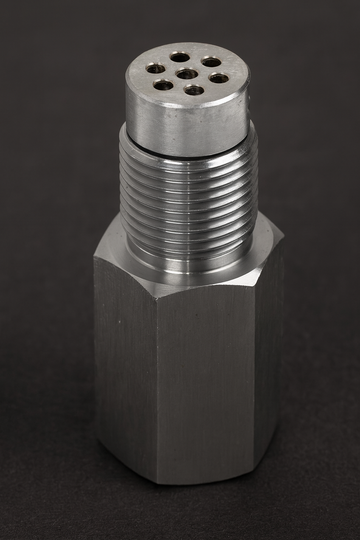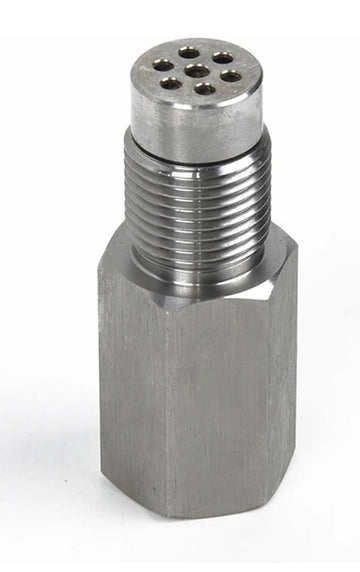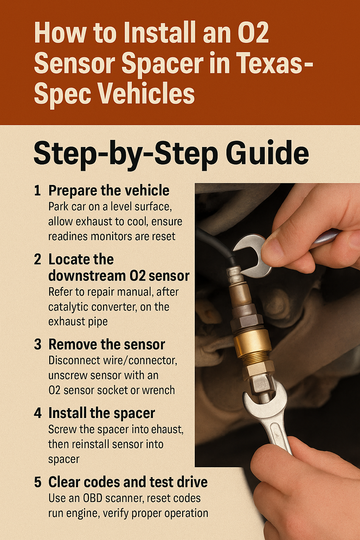Summary This comprehensive guide explores what O2 sensor spacers are, how they function in automotive exhaust systems, and why they are essential for enthusiasts modifying their vehicles. We'll dive into the mechanics, applications, benefits, and considerations of using O2 sensor spacers, including their impact on emissions, performance tuning, and check engine lights.
Table of Contents
-
Introduction to O2 Sensor Spacers
-
What is an O2 Sensor and What Does it Do?
-
How O2 Sensor Spacers Work
-
Common Use Cases for O2 Sensor Spacers
-
Types of O2 Sensor Spacers
-
Installation Guide and Tools Required
-
Performance and Emissions Considerations
-
Legal Considerations by Region
-
Frequently Asked Questions (FAQ)
-
Final Thoughts
1. Introduction to O2 Sensor Spacers O2 sensor spacers, also known as oxygen sensor extenders or CEL eliminators, are small, threaded fittings that modify the position of an oxygen sensor in the exhaust stream. They are primarily used by performance tuners and DIY car enthusiasts to address check engine light (CEL) issues often caused by aftermarket exhaust modifications.
2. What is an O2 Sensor and What Does it Do? The oxygen sensor is a vital part of a vehicle's emissions and fuel management system. Positioned in the exhaust manifold or just after the catalytic converter, it monitors oxygen levels in the exhaust gases. This data helps the engine control unit (ECU) adjust the air-fuel mixture for optimal combustion, fuel economy, and reduced emissions.
3. How O2 Sensor Spacers Work O2 sensor spacers work by relocating the oxygen sensor slightly out of the direct exhaust gas stream. This repositioning reduces the sensor's exposure to the concentrated exhaust gases, tricking the ECU into thinking the catalytic converter is functioning properly. This helps prevent false CELs related to catalytic converter efficiency, particularly the P0420 code.
4. Common Use Cases for O2 Sensor Spacers
-
After installing a high-flow catalytic converter
-
Following the addition of aftermarket headers
-
When a CEL appears for catalytic converter efficiency (e.g., P0420)
-
In off-road or racing applications where a tuned ECU doesn't require downstream O2 sensor feedback
5. Types of O2 Sensor Spacers
-
Straight spacers: Ideal for standard installations
-
Angled spacers: Useful when space is limited
-
Adjustable spacers: Allow fine-tuning of sensor depth for better CEL elimination
-
Built-in catalytic core spacers: Include a mini catalytic element to simulate full converter behavior
6. Installation Guide and Tools Required Tools Needed:
-
Wrench or O2 sensor socket
-
Anti-seize compound
-
Jack and jack stands (if working under the vehicle)
Steps:
-
Locate the downstream O2 sensor (typically after the catalytic converter).
-
Remove the sensor using the appropriate tool.
-
Apply anti-seize to the spacer threads.
-
Thread the spacer into the bung and tighten securely.
-
Reinstall the O2 sensor into the spacer and tighten.
-
Clear any stored CEL codes and test drive.
7. Performance and Emissions Considerations While O2 spacers can help avoid CELs, they do not improve emissions performance or replace a faulty catalytic converter. Their use is primarily for avoiding false positives from aftermarket modifications. Always consider emissions impact, especially if you're in a region with strict inspection requirements.
8. Legal Considerations by Region Laws vary by region. In California, for example, any modification affecting emissions system operation is prohibited unless it is CARB-approved. In other states, spacers may be tolerated in off-road-only vehicles or those exempt from emissions testing. Always check local laws before installation.
9. Frequently Asked Questions (FAQ) Q1: Will an O2 sensor spacer fix a bad catalytic converter? A: No. It may suppress the CEL, but it does not repair or replace a failing catalytic converter.
Q2: Can I use an O2 spacer on both upstream and downstream sensors? A: It's typically used on downstream sensors only. Upstream sensor data is critical for fuel management.
Q3: Is it safe for my engine? A: Yes, when used properly on downstream sensors. It does not interfere with fuel trims or combustion.
10. Final Thoughts O2 sensor spacers are a practical solution for enthusiasts looking to avoid CELs after exhaust modifications. While they are not a substitute for emissions equipment, they serve a functional purpose in tuning and custom exhaust setups. Ensure legal compliance in your region and use them as part of a well-considered modification plan.


![ Fix P0420 Fast: Do O2 Sensor Spacers Really Work? [Legal Tips Inside]](http://ghalysmotorparts.com/cdn/shop/articles/ChatGPT_Image_Oct_10_2025_10_40_32_AM.png?v=1760118069&width=360)
![Do O2 Sensor Spacers Really Help Clear the P0420 Code? [Expert Guide]](http://ghalysmotorparts.com/cdn/shop/articles/ChatGPT_Image_Oct_9_2025_09_28_33_PM_654c1798-c0d4-428f-a5b6-f20b95661b54.png?v=1760129952&width=360)


